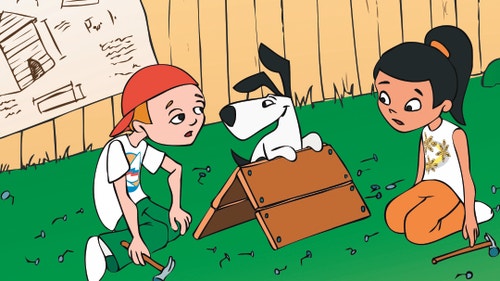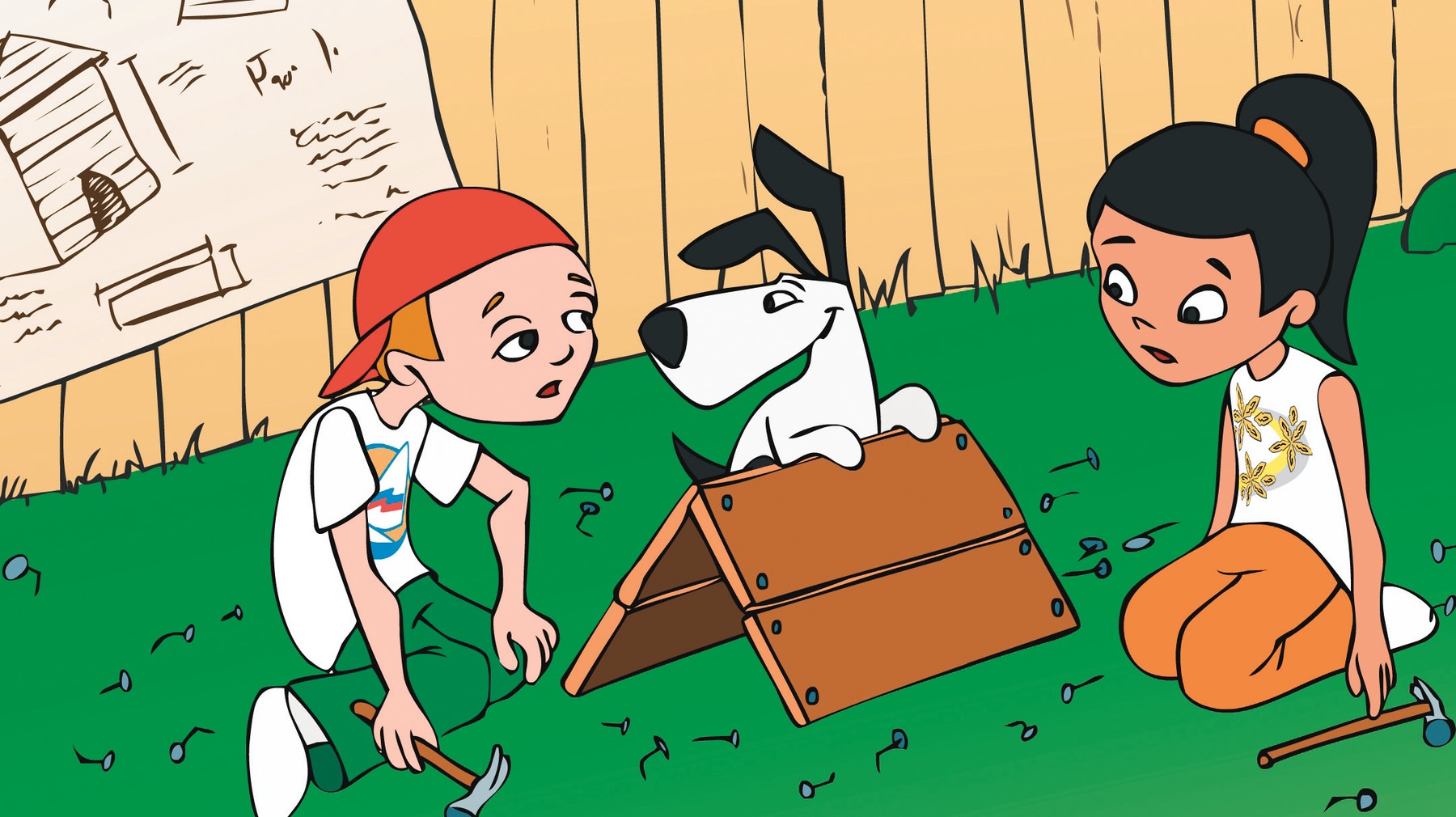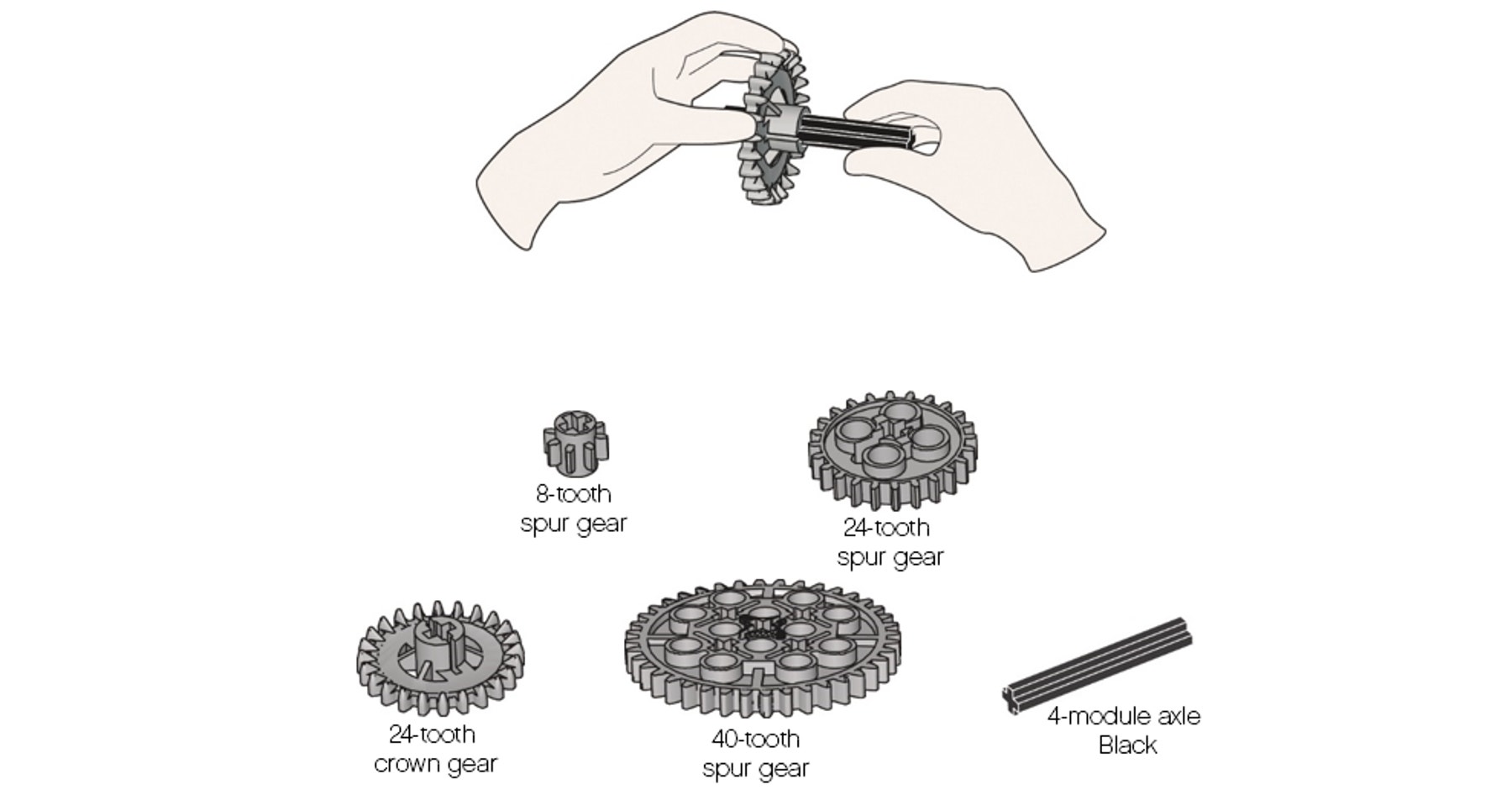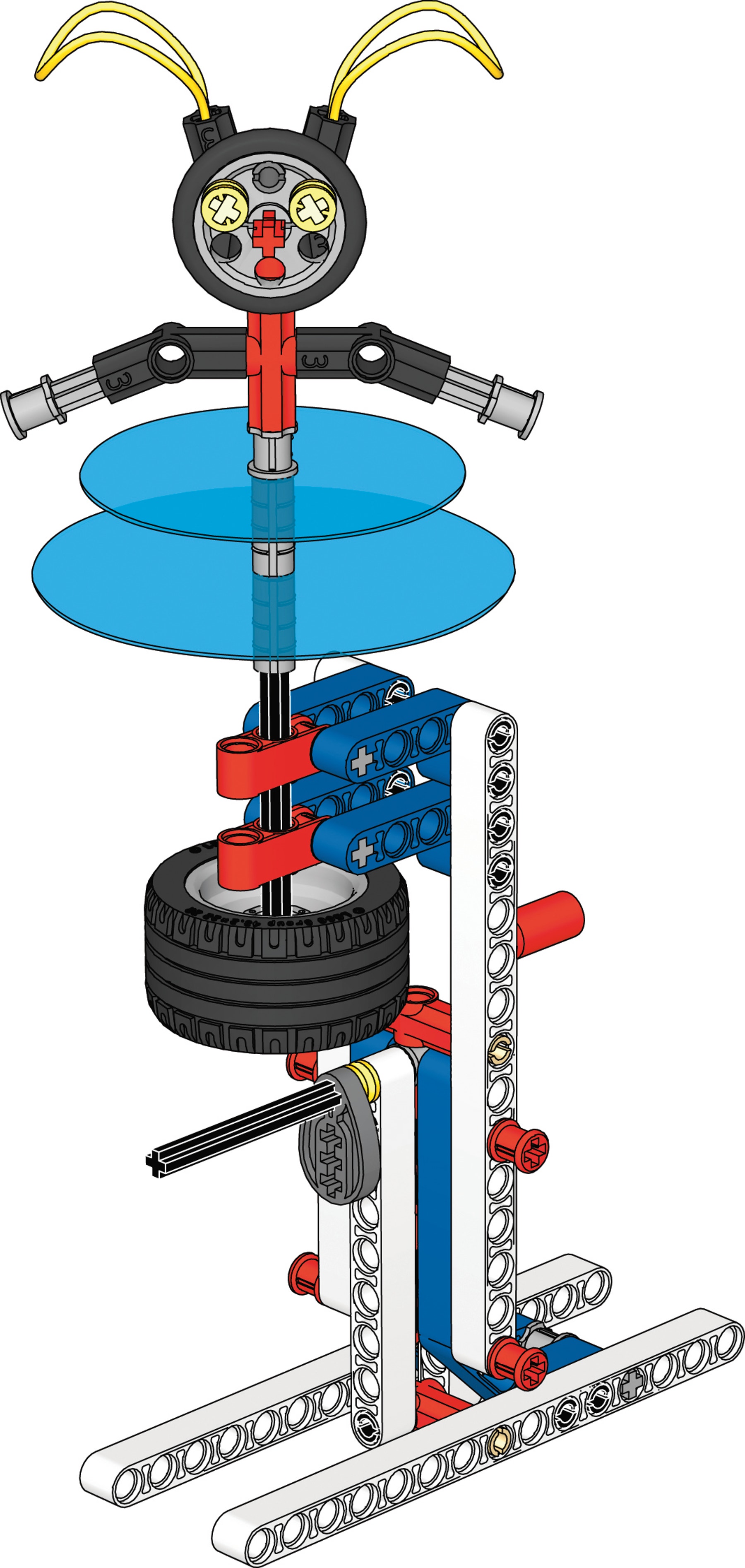The Hammer
Explore the scientific concepts of levers, cams, inclined plane, mechanical programming, data recording, friction, force and momentum.

Connect
(5-10 Minutes)
Jack and Jill are having fun hammering! They are trying to build a little shed for Zog the Dog, but the wood they are using is very hard and they need to use a lot of nails to make it hold.
After a while they are exhausted and try to think of simpler ways to hammer the nails into the wood. Two brains work better than one, they think, so together they try to solve the problem. Can you help them test a solution that will work and make the hammering much easier for them?
How can you make a hammer machine that will efficiently hammer nails into different surfaces?
Let’s find out!

Construct
(20-25 Minutes)
Build the Hammer
(all of book 4A and book 4B to page 11, step 14)

Testing
Turn the handle of the hammer by hand. Does it rise and fall smoothly?
If it feels stiff to turn, check that the axle bushings are not rubbing on the bricks and creating too much friction.
Did you know?
The LEGO research labs make sure every element has exactly the right amount of grip for the job it does and for safe handling by children. We call it ‘clutch power’ and it is measured very carefully!

Contemplate
(20-25 minutes)
Can you measure grip forces by hand?
Push the axle into each gear in turn – and pull it all the way through. Can you arrange them in order from most grip (most friction) to least grip?

How can we measure the clutch power more accurately?
Use the same size axle to test each gear.
Turn the handle to hammer the axle down.
Count how many hits until the axle touches the tabletop for each gear.
In our tests, the 8-tooth gear has the least amount of friction. It is so small it is hard for fingers to grip. The crown gear is next. Even though it is big enough to grip, it also has pointy teeth. The 24- and 40-tooth spur gears have most friction as they have blunt teeth, are easy to grip, and transmit the most power in a model.

Is the hammer a better test of axle friction than testing by feel?
If you hammer each gear several times, you will find very similar results each time. This hammer is a real scientific instrument and much better than guessing. The LEGO® labs have huge machines that do the same job, but much more accurately.
What else can the cam do?
On page 14, step 18, the modification makes it so that the hammer hits twice for each turn of the handle. Also change the axle position through the cam to make different actions and timings. Try making a slow rise and a fast drop, or a fast rise and a slow drop.
Optional: Using a heavier hammer
It will drive the axles through more quickly. You need to put in more energy to lift the hammer, but it drops with more force. It has more momentum. The smooth cam edge is an inclined plane, which make it easier to lift heavier weights.
Continue
(25-30 Minutes)
Bouncing ballerina!
Build the ballerina in book 4B page 23, step 21.
Predict, then test what happens when you turn the handle.
She rises, falls and turns at the same time.
Did you know?
Cams work inside car engines, clocks, toys, sewing machines, and locks – in fact anywhere complex timed actions are required. Bring in clocks, toys, locks, and other things that contain cams. Disassemble them and see how cams move.

- Can you predict the ‘dancing’ action made by the cam shaft arrangements shown
- Now try them and see
Note:
The wheel is in fact a round cam. It spins the dancer but does not lift her.

Deco-rotate-her!
Add your own fun decorations. Make a card screen to hide the cams. Can anyone else work out your cam dance program just by watching her dance? Make her arms fly out as she pirouettes.
Teacher Support
Students will explore the concepts of:
Using mechanisms – levers, cams, and inclined plane
Properties of materials
Product safety testing
Combining materials
Mechanical programming of actions
Recording data
Friction
Force
Momentum
Scientific investigation
9686 Simple & Powered Machines Set (two students per set recommended)
Decorative materials: wool, foil, card
Scissors
Sticky tape
NGSS
Disciplinary Core Ideas: Physical Science
MS-PS3 Energy
Crosscutting Concepts
Patterns
Science and Engineering Practices
Developing and using models
Planning and carrying out investigations
Analyzing and interpreting data
Constructing explanations and designing solutions
Common Core Mathematics Standards
7.RP.A / 6.NS.B / 6.EE.C / 7.EE.B / 8.EE.B / 8.F.B / 6.SP.A
Common Core English Language Arts
SL 6.1 / 6.2 / 7.1 / 7.4 / 8.1
RST 6-8.3 / 6-8.4 / 6-8.7
WHST 6-8.1 / 6-8.7 / 6-8.8 / 6-8.9
Student Material
Share with:
 Google Classroom
Google Classroom



